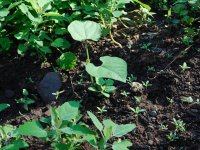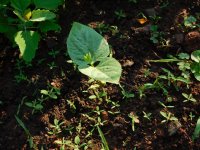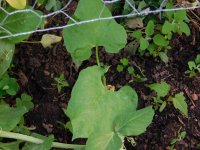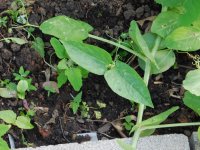VA_LongBean
Deeply Rooted
For your viewing pleasure, representative seedlings of the following:
Passage to India,
Orange Speckled Paiute Tepary,
Botosani Cyclop, and
Large Chocolate Tepary
Left to right top to bottom on the pictures apparently.
They're so cute at this age! I've reexamined the rows and all of the Botosani and Chocolate have come up. All of passage to India are up too, but I have lost between 2 and 3 of the Orange Paiute. There are enough seeds left to cover those holes and then some. They are all doing so well I wish I still had room to plant the remaining seeds in the main garden.
If you look closely, some of them are already starting to send up their little stems.
Passage to India,
Orange Speckled Paiute Tepary,
Botosani Cyclop, and
Large Chocolate Tepary
Left to right top to bottom on the pictures apparently.
They're so cute at this age! I've reexamined the rows and all of the Botosani and Chocolate have come up. All of passage to India are up too, but I have lost between 2 and 3 of the Orange Paiute. There are enough seeds left to cover those holes and then some. They are all doing so well I wish I still had room to plant the remaining seeds in the main garden.
If you look closely, some of them are already starting to send up their little stems.





